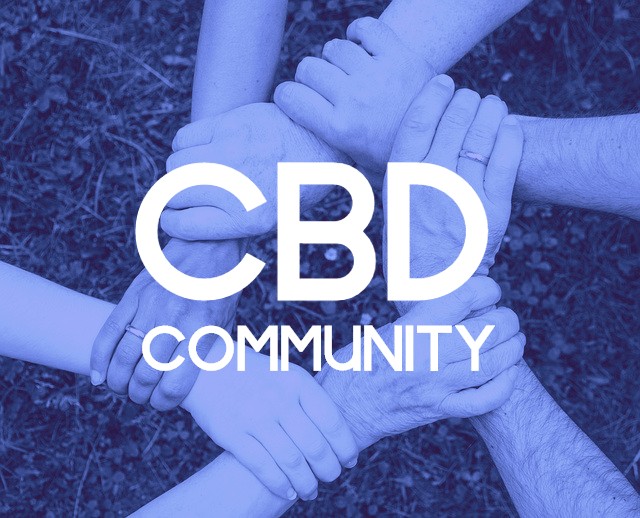Last updated on 11 November 2021
This article will look at how CBD works to help the body deal with muscle pain and how it works as a muscle relaxant by interfacing with the Endocannabinoid System.
What is the difference between muscle relaxers and painkillers?
When the body experiences pain, nerve receptors called nociceptors transmit signals to the brain to tell it that damage has been caused to a part of the body. This is partly a warning system, similar to when you touch something hot and the pain causes you to move your hand away.
There are several types of pain that can help isolate the cause of the damage to the body, although the individual’s perception and description of pain sometimes make it hard to analyze. When the body detects damage, chemicals called prostaglandins are released causing the nerve receptors to start sending the pain message to the brain.
A painkiller functions through the central nervous system. It prevents these chemicals from being produced, thus blocking the pain receptors in the brain. In reality, the pain is still there, however, the brain is “tricked” into thinking it is not.
If, however, the damage is muscular in origin it can be more effective to use muscle relaxers as these function at the actual site of the muscle and help to reduce stiffness and tension in the muscle and, therefore, reduce the pain. Traditional medications are not natural muscle relaxers.
None of these two ailments are in fact natural. Therefore, when looking for a natural muscle relaxer, you should consider CBD oil, as it has also shown evidence of effectively relieving muscle pain.
CBD and the Endocannabinoid System
CBD affects the body by interacting with chemical receptors in the nervous system. The brain has receptors that respond to neurotransmitters called endocannabinoids. Endocannabinoids are produced naturally in the body and are transmitted through the peripheral and central nervous system to the brain. Although this nervous system is not completely understood it is able to regulate some psychological, cognitive, and physical processes such as appetite, mood, and pain.
Since Cannabis has cannabinoids that are remarkably like those produced naturally by the body it is felt that it is also able to influence the receptors. There are therapeutic benefits associated with the ability to control or at least influence the endocannabinoid system by duplication the actions of these neurotransmitters. If this system is involved in creating a sensation of euphoria locomotor activity and pain, then CBD will have the effect of creating a feeling of wellbeing and allow a reduction in pain from movement.
Is using CBD oil as muscle relaxant effective?
Muscles can become painful for several reasons. At times, it is purely mechanical, they are strained due to excessive use or are pushed to their extreme. However, a muscle is also susceptible to psychological disorders such as stress. Traditional muscle relaxants fall into two categories neuromuscular blockers and spasmolytic, and they both work in slightly different but exceedingly complicated ways and do not necessarily relieve the muscle tension. Traditional painkillers are not natural muscle relaxers and can have harmful side effects such as liver damage. More common side effects are drowsiness weakness and fatigue.
Spasmolytic types of relaxants are particularly dangerous, for they are used as an anesthetic for operations and can have damaging effects for older people, as they also affect the heart rate. There is also the danger of addiction since this medication is a part of the opioid group. CBD oil has not shown any documented1 cases of addiction. In fact, research has concluded that CBD Oil can actually help fight it2
As already mentioned the strong connection between the Endocannabinoid System and CBD is the secret behind its efficacy when treating muscle pain. The way to naturally calm excessively contracting muscles is through a sufficient supply of endocannabinoids3.
CBD Oil has the ability to directly influence the speed of chemical messengers released when pain occurs. It also significantly boosts the body’s supply of endocannabinoids. Therefore, CBD oil treats muscle pain in two ways by assisting with muscle relaxation and reducing spasticity.
How to use CBD to relieve muscle pains?
Coping with stiff, aching, cramping muscles is a daily problem for millions of people. These can be as simple as a cramp in the leg that suddenly wakes you from a deep sleep or as complex as Tourette’s or multiple sclerosis. CBD can be prepared into various formats that prove useful for treating different problems by using different methods of application.
- Oils and tinctures
- Salves
- Lotions
Related article: How to use CBD? The full guide
CBD for other types of pain
CBD and CBD products have a wide application in treating other types of pain. Chronic pain can often be one of the most exhausting types of pain to treat. As the name hints, it is present for longer periods of time, affecting a person’s overall quality of life. Research by the British Pharmacological Society4 suggests that cannabidiol is indeed an effective and safe way of treating different types of chronic pain.
CBD has also shown to be effective when treating arthritis, osteoporosis and multiple sclerosis, which are also often associated with high levels of pain.
CBD oil for muscle pain – the bottom line
CBD oil can be used for various conditions, including muscle pain. Research suggests, that CBD may be an effective muscle relaxer. Due to its interaction with the endocannabinoid system, minimum side effects, and effectiveness as a stress reliever, CBD (Cannabis compound) may hold the key to great natural muscle relaxers.
As we patiently wait for more studies on humans to be conducted, we can rely on the countless testimonies people leave online every day.
CBD for Muscle Pain – Customer Reviews*
For me – the best CBD product… 




“For me, it’s the best CBD product on the market, I have tried some and I am completely convinced. Since taking the oil, I feel agile and fresh, and the sleepless nights belong in the past. My back pain also reduced and no longer noticeable, after hard training muscle pain just disappears. With certainty, I recommend the product for several other problems such as anxiety. I just recommend it in general!!!”
Trustpilot review by F. H. Limburger
References
- Iffland, K. and Grotenhermen, F. (2017). An Update on Safety and Side Effects of Cannabidiol: A Review of Clinical Data and Relevant Animal Studies. Cannabis and Cannabinoid Research, 2(1), pp.139-154. [↩]
- Gonzalez-Cuevas, G., Martin-Fardon, R., Kerr, T., Stouffer, D., Parsons, L., Hammell, D., Banks, S., Stinchcomb, A. and Weiss, F. (2018). Unique treatment potential of cannabidiol for the prevention of relapse to drug use: preclinical proof of principle. Neuropsychopharmacology, 43(10), pp.2036-2045. [↩]
- Fine, P. and Rosenfeld, M. (2013). The Endocannabinoid System, Cannabinoids, and Pain. Rambam Maimonides Medical Journal, 4(4). [↩]
- Lynch, M. and Campbell, F. (2011). Cannabinoids for treatment of chronic non-cancer pain; a systematic review of randomized trials. British Journal of Clinical Pharmacology, 72(5), pp.735-744. [↩]
Author
With close to two decades of successful stint in the Media industry, I felt I was surely missing a piece in my life puzzle. I took a break and set out to seek the purpose of my life. I travelled, lived out of a suitcase, let things flow into life without resisting, and after five challenging years, I found my rhythm. I love to write about Cannabis and Health and try my best to simplify esoteric concepts into simple ideas for life.







